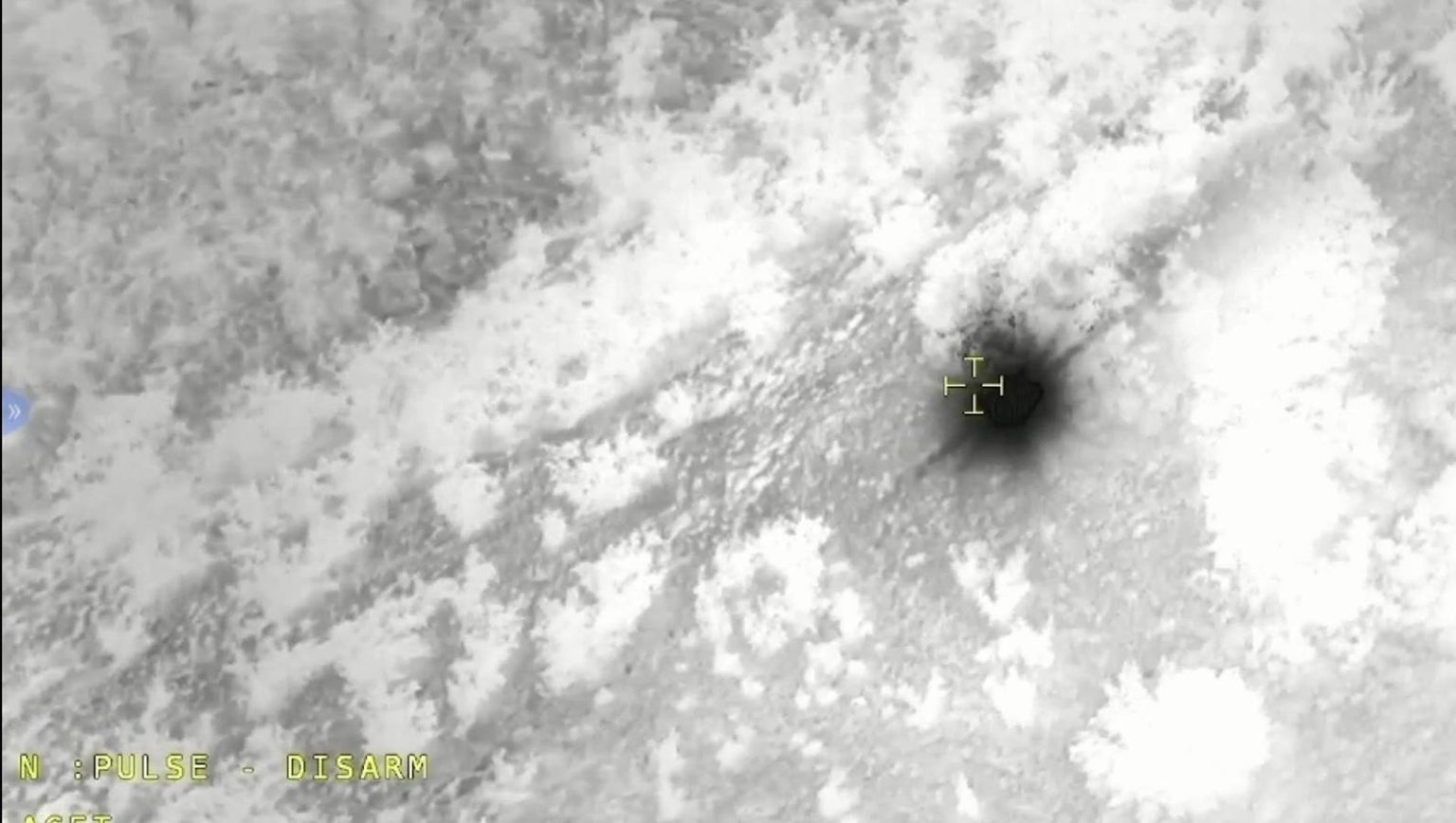Two incidents involving Iran may unwittingly have given a sales boost to Turkey’s drone and America’s air defense missile exports, all in the space of under two months.
Two polar opposite narratives have played out in state-run Turkish and Iranian media since May 19, when a helicopter carrying Iranian President Ebrahim Raisi and other officials crashed in the country’s northwest, killing all aboard.
Following that crash, a Turkish Bayraktar Akinci drone entered Iranian airspace amid poor weather conditions to aid the search and rescue mission.
Turkish and Iranian media have hotly disputed the true significance of that mission ever since.
Turkish media gave wall-to-wall coverage of the drone’s mission, insisting the Akinci located the crash site and passed on “critical information” to Tehran. Articles in the Turkish press insist the Akinci deserves much credit for its role in finding the crash site. Selcuk Bayraktar, chairman of the company that manufactured the Akinci, unsurprisingly extolled the role played by the drone that night, insisting that it proved its capability to withstand adverse weather conditions over mountainous terrain.
While poor weather and visibility hindered the ability of many Iranian aircraft to search for Raisi’s Bell 212 helicopter, Iranian military officials and media dispute Turkey’s narrative, claiming the Akinci failed to “accurately” locate the site.
Turkey shot back at such claims on Thursday, reasserting that the Akinci found the helicopter and that Ankara had “rushed to help Iran on its dark day and fulfilled the necessity of good neighborly relations.”
Deflecting the impression that the Akinci achieved what Iranian drones could not, the Iranian military said it could not send drones with synthetic aperture radar since they were operating in the northern part of the Indian Ocean.
Iranian media also strongly criticized Turkey for flying the Akinci over sensitive sites during its search and drawing the Turkish flag’s crescent and star over eastern Turkey’s Lake Van upon its return, as millions watched live on numerous flight tracking apps.
Iranian officials, including the late president, bragged about growing international interest in the country’s indigenous military drones. While Tehran has successfully reached deals to sell its drones to some countries, they are not as popular as their Turkish counterparts, which are exported far more widely. Turkey exported its well-known Bayraktar TB2 to over 30 countries in five years.
The Akinci drone is much larger, more sophisticated, and more expensive than the TB2 and probably won’t win as many export contracts. Still, Pakistan and Azerbaijan have acquired it. Much to Iran’s chagrin, Ankara and the drone’s manufacturer Baykar Defense will likely point to the Akinci’s role in finding Raisi’s helicopter in future sales pitches. The drone’s high endurance and powerful sensors will doubtlessly mark a unique selling point for countries seeking high-tech drones.
As Turkey and Iran promoted diverging narratives over the Akinci’s performance, officials from the United States and the six-member Gulf Cooperation Council countries met in Saudi Arabia’s capital, Riyadh, on Wednesday. At these meetings, the U.S. aims to promote its objective of building a regional missile shield.
To sell the idea, the Americans are pointing to the successful intercept of over 300 Iranian missiles and drones fired at Israel on April 13-14 in the first direct Iranian attack against its arch-foe. Israel’s multi-layered air defenses—with the support of American, British, French, and Jordanian fighter jets, which shot down the drones before they could reach Israel—intercepted 99 percent of the incoming munitions.
If successful, the initiative will undoubtedly pave the way for even more lucrative American and Western arms sales to the region. The United Arab Emirates already operates the Terminal High Altitude Area Defense System, THAAD, and was the first to use it in combat shooting down an incoming ballistic missile fired by the Houthis in Yemen in January 2022. Saudi Arabia also ordered the system.
The United States has advised its regional allies against buying advanced Chinese-made weapons systems, citing interoperability issues. While American partners in the regions have bought Chinese drones, they haven’t shown much interest in high-end Chinese or Russian air defense systems. Abu Dhabi and Riyadh have recently ordered South Korean-built KM-SAM medium-range air defense missile systems, which are bought from a close American ally and are not likely to present significant interoperability issues.
Consequently, the Arab Gulf states will predominantly field American-made air defense missiles for the foreseeable future that might one day integrate, posing a significant challenge to any future actions by Iran or its myriad militia proxies. If Iran’s April 13-14 attack ultimately convinces regional states of proof of concept for this project, that would mark another instance of Tehran’s actions backfiring.
Washington has also pledged to help Jordan improve its air defenses amidst militia drone threats from Iraq and Syria. The kingdom is ordering at least 12 modern Block 70 F-16s to upgrade its air force and will likely seek more air-to-air missiles. Amman may also join a regional air defense initiative if it helps secure the deployment of a Patriot missile system on its territory, which it has called for since October amidst boiling regional tensions ignited by the ongoing Gaza war.
Read the full article here





